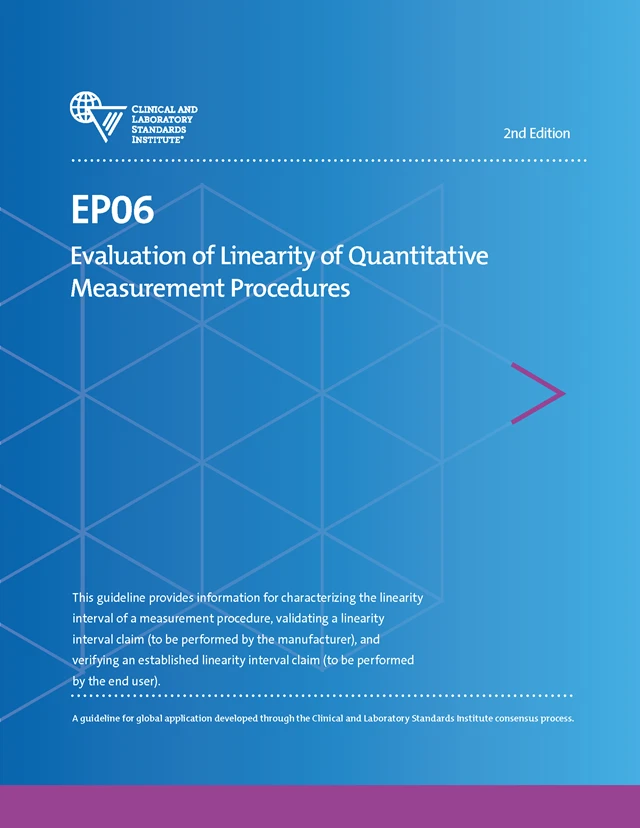You'll receive the latest updates on new standards, guidelines, and educational resources, as well as expert insights to help enhance your laboratory's performance and compliance.
Linearity in Laboratory Testing
Linearity is the ability to provide laboratory test results that are directly proportional to the concentration of the measurand (quantity to be measured) in a test sample.

Linearity is the ability to provide laboratory test results that are directly proportional to the concentration of the measurand (quantity to be measured) in a test sample.
Medical laboratory tests are essential to the clinical management of patients. It is important to express numerical results with additional properties, such as linearity. A linear measurement procedure provides results that can be compared by subtraction and by division. This comparability is an important property for the measurement procedure results. When physicians use linear quantitative measurement procedures, they can easily compare measurement procedure values. For example,100 units of a measurand is two times more amount (or concentration) than 50 units of the measurand.
For the most part, the relationship between disease severity and the true measurand values (concentration, activity, etc.) is complex and nonlinear. Linear measurement procedures help reveal the relationship between the severity of disease and the true value of the measurand.
Clinical and Laboratory Standards Institute guideline CLSI EP06—Evaluation of Linearity of Quantitative Measurement Procedures is intended to provide both manufacturers and users of quantitative measurement procedures with an economical and user-friendly method of validating and verifying the linearity interval. This guideline also can be used to determine the extent to which a quantitative measurement procedure meets medical requirements or the manufacturer’s linearity interval claims.
Robert McEnroe, PhD, Chairholder of EP said, “CLSI EP06 2nd Edition takes a linearity protocol that we already regard as good and makes it a lot better. The document provides guidance during validation and verification processes end to end. Enhancement of graphical representations and understandable worked examples allow the reader to better interpret robustness and potential limitations of an assay’s linearity."